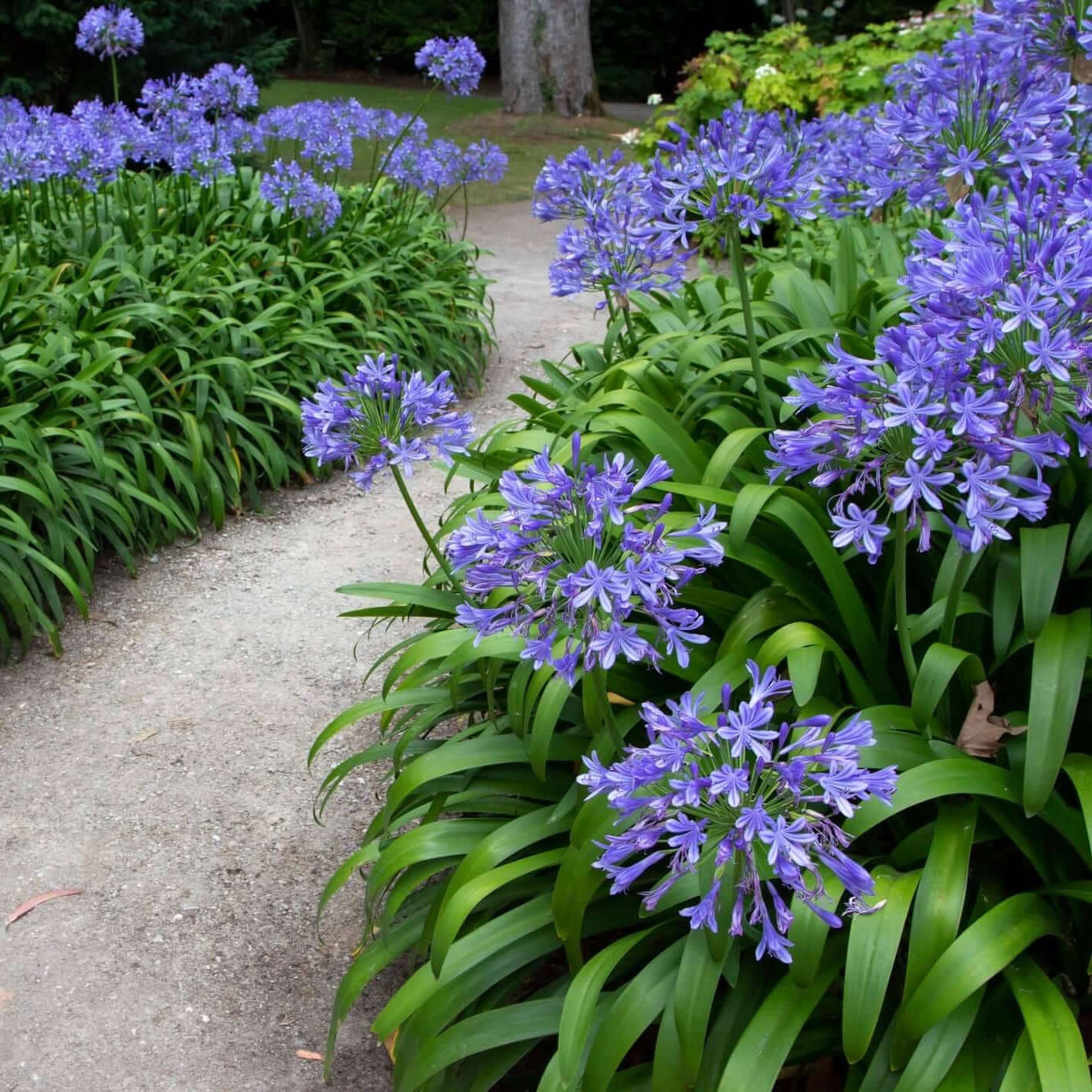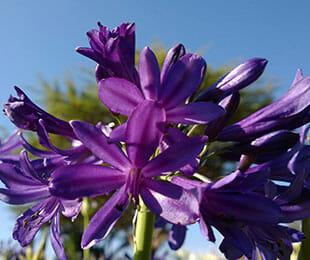Seasonal Agapanthus Care: Preparing for Winter Season and Summer
Seasonal Agapanthus Care: Preparing for Winter Season and Summer
Blog Article
Understanding the Art of Agapanthus Care: Vital Steps for Healthy Development and Lively Flowers
In the realm of horticulture, the farming of agapanthus stands as a fulfilling endeavor for those that seek to nurture these elegant blooming plants. With their striking blooms and stylish foliage, agapanthus has recorded the interest of garden enthusiasts worldwide. Nevertheless, accomplishing optimal development and vivid blossoms calls for a nuanced approach that encompasses different essential steps. From choosing the right selection to understanding trimming strategies, the journey towards cultivating thriving agapanthus plants is multifaceted and holds the vital to unlocking the complete potential of these agricultural treasures.

Choosing the Right Agapanthus Variety

When selecting the best Agapanthus selection for your garden, consider factors such as climate viability, bloom shade, and growth practice. Additionally, consider the environment in your region to make sure the Agapanthus variety you choose can prosper in your details problems. Recognizing the growth habit of various Agapanthus varieties is vital for appropriate positioning within your yard.
Suitable Growing Problems
Thinking about the optimum ecological requirements is vital for successful Agapanthus cultivation. Agapanthus plants are sensitive to cold temperature levels and must be protected from frost during winter season months.
To guarantee healthy and balanced growth and lively blooms, plant Agapanthus bulbs at a depth of about 2-4 inches and space them 8-12 inches apart. Adding raw material, such as garden compost, to the dirt can improve drainage and fertility, promoting robust origin growth. Mulching around the base of the plants aids retain wetness and suppresses weed development. Normal watering is essential, specifically during the growing season, to maintain the soil continually wet yet not saturated.
Watering and Feeding Tips
Keeping correct dampness levels and providing essential nutrients are crucial elements in the care program for Agapanthus plants. When it comes to watering Agapanthus, it is important to strike an equilibrium. These plants favor regularly damp dirt however are at risk to root rot if overwatered.
Fertilizing Agapanthus is important for advertising healthy and balanced development and respected blooms. Use a balanced plant food, such as a 10-10-10 formula, in the very early spring as brand-new growth arises. Repeat this application every 6-8 weeks throughout the expanding period. Stay clear of extreme fertilization, as it can result in lavish vegetation at the cost of blossoms. Constantly follow the maker's directions for appropriate dilution and application methods. By adhering to these watering and feeding pointers, you can ensure your Agapanthus plants thrive and generate vibrant, lasting blooms.
Pruning Techniques for Agapanthus
Pruning Agapanthus plants at the proper times and with correct methods is vital for preserving their health and advertising ideal growth and blooming. The suitable time to prune Agapanthus is in late winter or very early spring prior to new development emerges.
For flowered stems, wait until the blossoms have actually withered and after that trim them back to the base. This not just tidies up the plant's look however additionally motivates the development of brand-new flower buds. Deadheading spent blossoms can also reroute the plant's energy right into producing even more blooms instead of setting seeds. Nevertheless, if you intend to accumulate seeds for propagation, leave some blossoms to mature and completely dry on the plant.
Bear in mind to make use of tidy, sharp devices to make exact cuts and reduce the threat of introducing conditions. Agapanthus. Routine pruning will aid keep your over here Agapanthus looking healthy and balanced and neat while making sure a bountiful display screen of beautiful blossoms
Managing Typical Bugs and Diseases
After making certain proper pruning methods for Agapanthus, it is necessary to resolve typical pests and conditions that can affect the health and wellness and vigor of these plants. Agapanthus plants are normally hardy but can still come down with specific issues. One common bug that impacts Agapanthus is the Agapanthus original site gall midge. This small, orange fly lays its eggs in the vegetation, bring about altered growth and flower buds that fail to open up. To battle this insect, prune and ruin any type of damaged plant components and think about making use of insecticidal soap.
One more usual issue is fungal fallen leave spot, which provides as dark sores on the fallen leaves. To avoid fungal diseases, ensure excellent air circulation around the plants, prevent above watering, and get rid of any infected fallen leaves without delay. Additionally, Agapanthus plants can endure from root rot if they are grown in inadequately draining soil. To avoid this, plant Agapanthus in well-draining dirt and stay clear of overwatering. By being vigilant and taking timely activity versus diseases and pests, you can aid your Agapanthus plants grow and produce dynamic blossoms.

Verdict
To conclude, understanding the art of agapanthus care involves selecting the right range, giving ideal growing problems, appropriate watering and feeding, suitable trimming techniques, and attending to usual parasites and conditions. By adhering to these important actions, you can guarantee healthy and balanced development and dynamic blooms for your agapanthus plants. Bear in mind to consistently monitor and maintain your plants to promote their general well-being and long life.
To guarantee healthy and balanced growth and vivid blossoms, plant Agapanthus bulbs at a deepness of regarding 2-4 inches and space them 8-12 inches apart. By complying with Get More Information these watering and feeding pointers, you can guarantee your Agapanthus plants prosper and produce lively, resilient flowers.
One typical bug that affects Agapanthus is the Agapanthus gall midge. Furthermore, Agapanthus plants can suffer from origin rot if they are planted in poorly draining soil. By adhering to these vital actions, you can make certain healthy and balanced development and vivid blossoms for your agapanthus plants.
Report this page